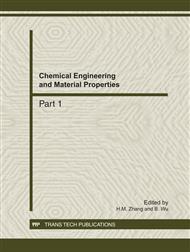p.308
p.313
p.319
p.323
p.328
p.332
p.336
p.340
p.345
Development Strategy of Insulation Macromolecular Composite Materials
Abstract:
The status and progress of high pressure resistant insulation material at home and abroad were reviewed from aspects like high thermal conductivity, high temperature resistance, environ-mental protection and modification of nano-particles. High thermal conductivity insulation materials can improve the efficiency of cooling system and decrease the energy loss of electric machines. Some famous foreign companies keep ahead in this field. Current domestic high temperature resistant solvent less insulating varnish can only be used in small and medium sized generators instead of high voltage generators. Therefore this kind of material should be improved in either resin rich or resin less insulation systems.
Info:
Periodical:
Pages:
328-331
Citation:
Online since:
December 2011
Authors:
Price:
Сopyright:
© 2012 Trans Tech Publications Ltd. All Rights Reserved
Share:
Citation:


